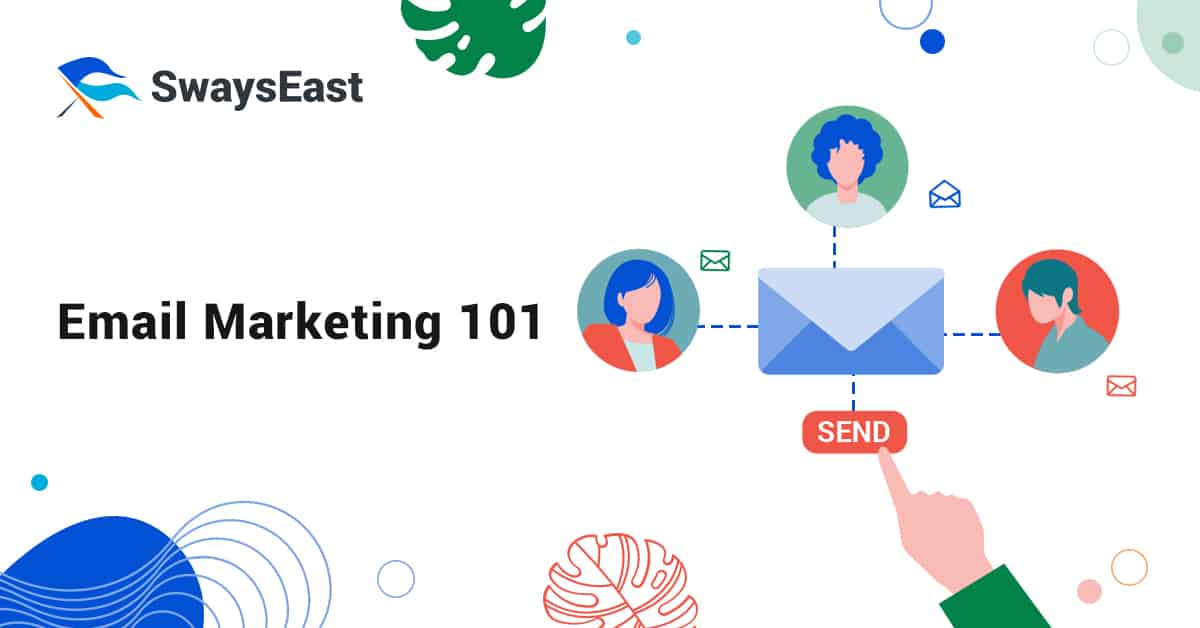Email marketing harnesses the power of email to reach and create meaningful relationships with a target audience. Effective email marketing campaigns are focused and provide relevant information at the right time to convert warm leads into loyal customers.
Through email marketing, anyone interested in your products or services can join the mailing list to learn everything they need to know, learn more about what you offer and make informed buying decisions.
As the first online marketing channel, email marketing has been around long before the World Wide Web. Email marketing, when done right, is more effective than print, TV, internet advertising, and social media combined when it comes to customer acquisition, retention, and ROI.
Building and growing an engaged email list – a list filled with people who are eager to use and benefit from your products or services – can yield dramatic rewards for your business.
What To Include
- News about your business or announcements on new products or services
- Store-wide and/or exclusive news about promotions, sales, and discounts
- Sales and advertising emails on flagship products and services
- Relationship-building content that can be used for lead acquisition, customer engagement, or consumer retention
- Newsletter, digital magazines, or any type of regular communication email
- Links to new blog posts or updates on other relevant web sites or content
- Information about up-and-coming events including invites
- Follow up email campaigns
Email Marketing Formats
- Welcome emails to greet new subscribers. As one of the most important emails to send, a welcome email is the first email a new subscriber receives and achieves the highest open rate for businesses – 86% more effective than newsletters. This is a prime opportunity to make your new subscribers feel special and to set expectations.
- Newsletter emails to keep people in the loop. These emails contain regular news and updates about your company and product/service offers. It’s also a great format to highlight interesting insights within your industry, customer reviews, case studies, and the latest research on relevant technologies, tools, and solutions.
- Promotional emails to incentivize sales. Emails are a means to delight recipients and drive more revenue for business. Use behavioral targeting to personalize emails when launching a sale or a special promotion as well as to highlight key information like loyalty discounts, promo codes, deals, and expiration dates.
- Announcement emails to provide details about significant happenings. These refer to new product/service releases, recent updates about your brand, and upcoming events. Announcement emails keep loyal subscribers informed of what’s going on, why they should care, and how they can benefit from this specific message.
- Remarketing emails to win back customers. These include abandoned cart emails and product retargeting emails meant for online shoppers who leave a website without finishing the checkout process. The goal is to nudge them to return to the website and purchase what they left behind. Content used in these emails contain behavioral and action-based information to capture interest of inactive subscribers and to drive more sales among active users.
- Customer appreciation emails to connect on special occasions. This type of email enables marketers to continuously engage with subscribers while keeping your brand top-of-mind. For example, birthday emails and anniversary emails are an opportunity to build personal connection and stronger relationships. Free gifts and exclusive incentives on top of personalized greetings can serve as compelling selling points.
- Connect via social emails to extend the reach of email campaigns. Integrating social media with your email marketing campaigns will help you get to know more about your target audience including their expectations and preferences. Provide two options: ask users to share a specific content block with their social network/s or to follow, like, or subscribe to your brand’s social media accounts.
Email Marketing Best Practices
- Create simple but interesting copy. Subscribers should be able to get the gist of your email quickly. Make sure content blocks are reader-friendly but exciting enough to warrant their attention.
- Display CTA buttons prominently whenever possible. Putting CTA buttons in strategic areas in your emails immediately draws the eye and entices users to click right away. It will absolutely give you a huge edge when it comes to increasing conversion rate.
- Work hard to build your list. Place opt-in forms where they’ll have the greatest impact– through your website’s blog and social media. Include email registration forms on every main page of your site. Consider sharing email lists with other brands in exchange for including a link with your opt-in form in their newsletter. Use any and all tactics that apply to your business.
- Offer value. Want to keep subscribers? Provide great content and make them feel special. Reward them with something valuable – discounts, incentives, or special offers they can’t get anywhere else – and make sure to deliver on your promise.
- Have strong subject lines and calls to action. Your subject line and call to action can determine whether or not users open the email in the first place. Conduct A/B tests to determine how and which variation could work more effectively with a group of recipients.
Want to learn more about how to build better email marketing campaigns? SwaysEast’s comprehensive suite of AI and ML driven marketing tools elevates your marketing through data-driven insight. Get the most from your email marketing campaigns. Contact us today for a FREE TRIAL. SwaysEast: Do More – Know More – Achieve More.


